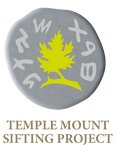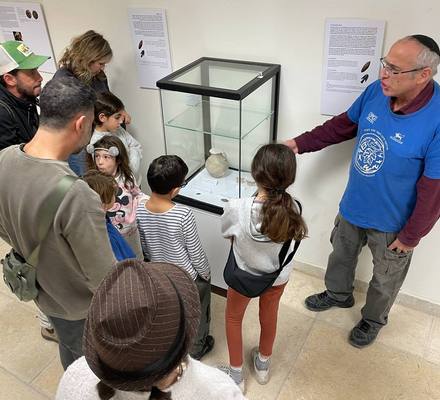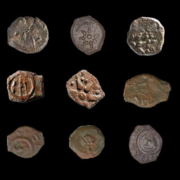Continuation of the Sifting at Mitzpeh HaMasu‘ot (The Masu’ot Lookout) and Some Updates
About two months ago, we announced financial difficulties that threatened the continued operation of the sifting site at Mitzpe HaMasuot. Fortunately, thanks to additional donations and significant processes initiated since then – including government funding and commitments from new supporters – the threat of the site’s closure has passed. However, until these funding processes are fully realized, we have resumed operations in a limited format. This means the site will open to groups of 25 participants or more, with the possibility of booking smaller groups during other hours on the same day.
Great Hanukkah at the Sifting Site:
This past Hanukkah, the site was included in the Heritage Week initiative by the Council for Conservation of Heritage Sites in Israel, supported by the Ministry of Heritage. Nearly 1,000 visitors participated in sifting activities, enjoyed special guided tours focusing on Hanukkah-related finds, and viewed a captivating display featuring a replica of a Hellenistic oil jug sealed with stamp impressions dating to the Hasmonean period.
Participation Fee Update:
Unfortunately, we had to increase the participation fees to help partially cover the site’s operational expenses. If all current funding processes are successfully realized, we may be able to reduce the fees in the future, allowing more audiences to participate – similar to last Hanukkah when participation was subsidized.
New Discoveries:
- Second Temple Period Seal: While preparing for the Hanukkah exhibit and reviewing archaeological literature about Second Temple Period seals (which are very rare), we realized that an old stone object, found during sifting years ago and stored among other “mysterious finds” awaiting identification, is actually a stone seal from the Second Temple Period—possibly even a Hasmonean seal. This discovery is currently under research and will be officially published in the future.
- Ancient Chinese Porcelain: A fragment of a porcelain bowl with a Chinese inscription was recently found during the sifting. Thanks to Benjamin Chang, a volunteer who occasionally assists with translations of our contents to Chinese, we discovered that it was produced by the Great Ming dynasty during the Chenghua era (1465–1488). If this identification is correct, it represents the oldest imported porcelain ever discovered in Jerusalem. More details will be published after the research is completed.
- Rare Late Bronze Age Pottery Shard: Another rare item recently discovered is a fragment of a pottery vessel coated with a white-yellowish slip and decorated with a floral design. This shard resembles vessels from the Late Bronze Age (1550–1150 BCE) and may have been part of a bi-conical jug. As we’ve noted in the past, finds predating the First Temple period are very rare in soil from the Temple Mount.
Additional Fascinating Finds:
Recent sifting has also uncovered colorful floor tile fragments that once adorned the courtyards of the Second Temple, floor tiles from the Crusader period that decorated the Dome of the Rock’s floor, jewelry, an arrowhead, a Jewish coin from the fourth year of the Great Revolt against the Romans, pottery fragments from the First Temple period (possibly part of cultic vessels), and more.
Want to Help Uncover and Illuminate Jerusalem’s and the Temple Mount’s History?
Join us for sifting! We’d also appreciate your help in spreading the word among educational institutions, tour agents and other groups. The more sifting bookings we receive, the more we can maintain the site’s stability and support its development.
📞 To book an activity for a group: booking@tmsifting.org





Discover more from The Temple Mount Sifting Project
Subscribe to get the latest posts sent to your email.












Leave a Reply
Want to join the discussion?Feel free to contribute!